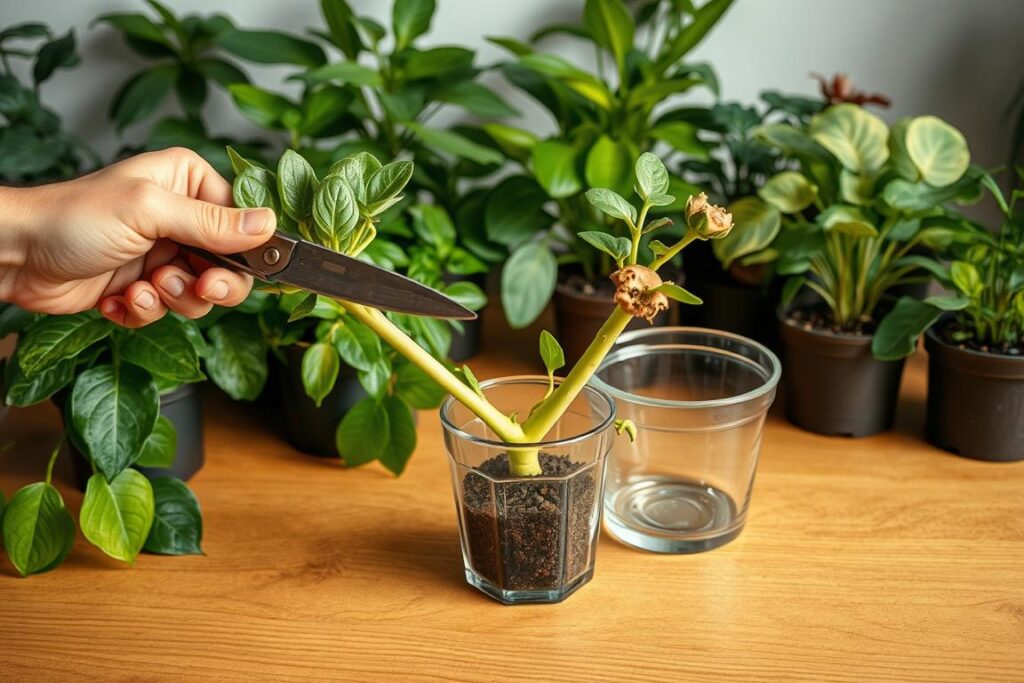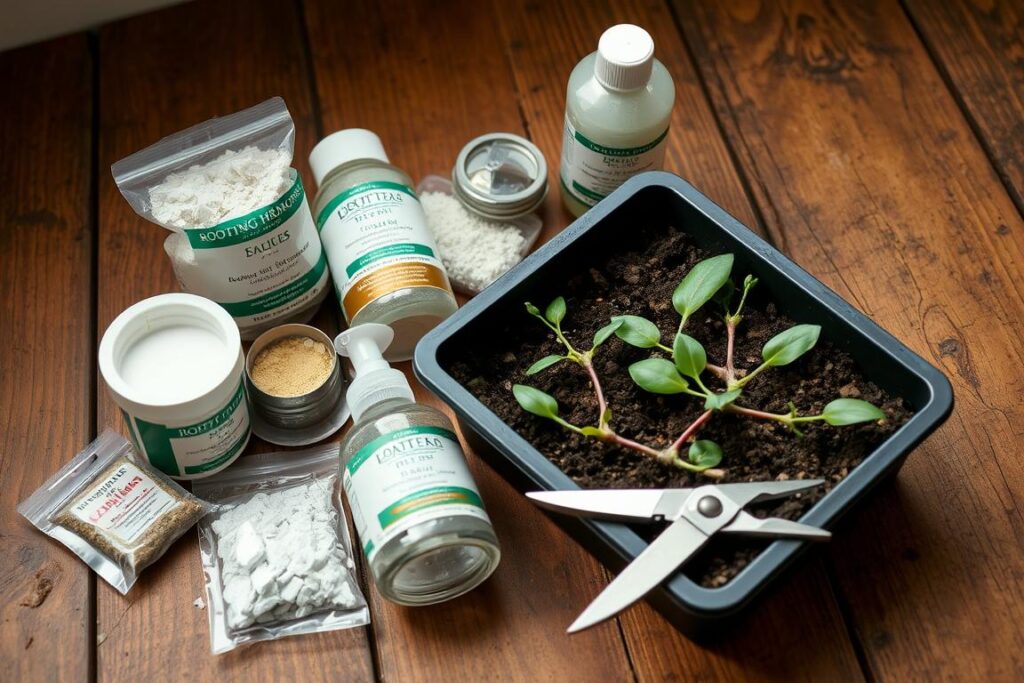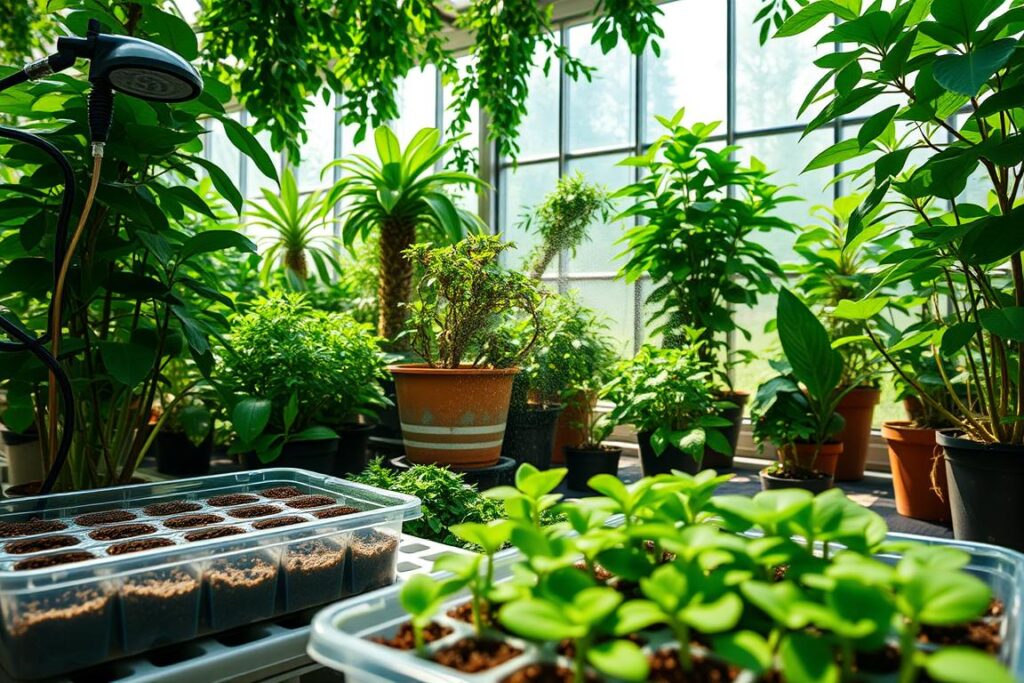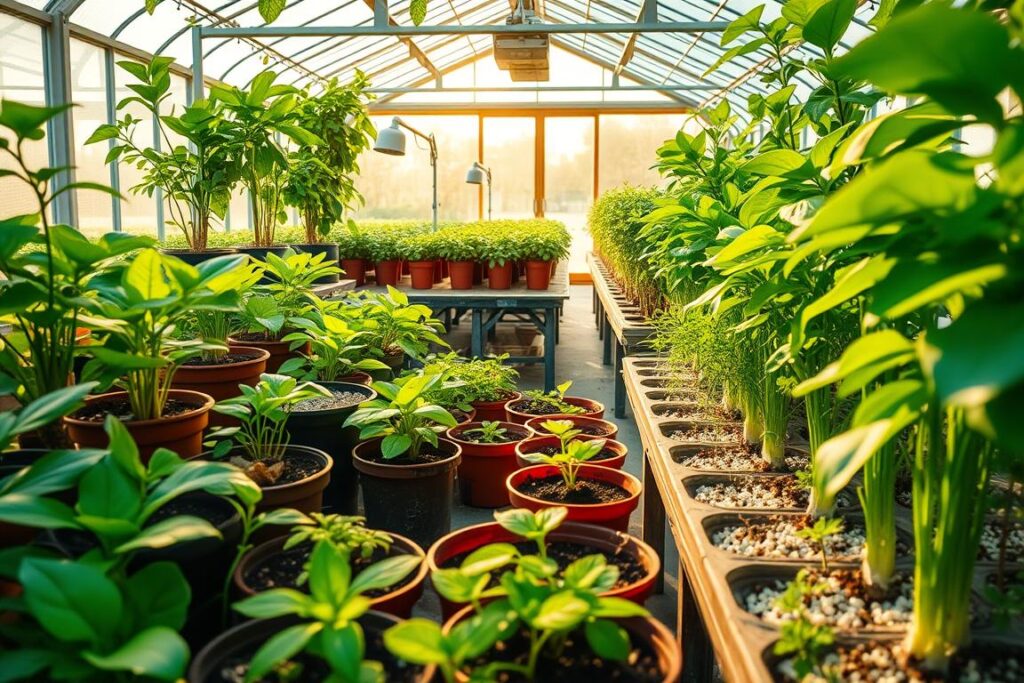Welcome to the world of plant propagation. Here, you can grow your own greenery easily. Follow simple tips and use effective methods to share plants, create new ones, and enjoy nurturing life.
With the right techniques and supplies, you can successfully propagate plants. This lets you grow new plants using different methods. Learning about plant propagation tips and techniques makes you a skilled gardener, enjoying the rewards of growing your own plants.
Starting your plant propagation journey brings joy and satisfaction. You’ll love growing your own plants and seeing them thrive. Using proven tips and methods, you can create a beautiful garden that brings you joy and relaxation.
Table of Contents
ToggleIntroduction to Plant Propagation
In this article, we’ll guide you through plant propagation. We’ll share the knowledge and skills needed to grow plants easily. We’ll cover the basics, including different methods and techniques, giving you confidence to grow your own plants.
Key Takeaways
- Learn simple plant propagation tips to grow your own greenery
- Discover effective propagation methods for sharing plants with friends
- Understand the benefits of plant propagation for your garden
- Learn how to use the right techniques and supplies for successful plant propagation
- Become a skilled gardener by following proven plant propagation tips and techniques
- Enjoy the rewards of growing your own plants using various propagation methods
Understanding Plant Propagation Basics
Plant propagation lets you make new plants from ones you already have. It’s a fun way to share plants, grow new ones for your garden, and keep your favorites. You’ll need basic propagation supplies like pots, soil, and rooting hormones to start.
There are many ways to propagate plants, including sexual and asexual methods. Each has its own advantages and disadvantages. Knowing these can help you pick the right method for your plants.
Success in plant propagation depends on the plant type, the time of year, and your propagation supplies. Learning about these can boost your chances of success. It also brings many rewards to your gardening journey.
Tools and Supplies You’ll Need
To start plant propagation, you need basic tools and supplies. You’ll need a sharp knife or pruning tool, a pot or container, and quality potting mix. A rooting hormone can also help your new plants grow roots.
Some key gardening tools include gloves, a trowel, and a watering can. There are many soil and potting mix options. You can pick ones made for seed starting or propagation.
Essential Gardening Tools
- Gloves: to protect your hands from thorns and dirt
- Trowel: for digging and transplanting plants
- Watering can: for gentle and efficient watering

Along with these tools, you’ll need pots or containers and quality potting mix. Rooting hormones can also help your plants grow roots.
Choosing the Right Plants for Propagation
Choosing the right plants is key for successful plant propagation. You should pick plants that are easy to grow and will do well in your care. Water propagation works well for many plants, and with the right seed starting tips, you can grow a variety of plants.
For beginners, plants like spider plants, snake plants, and ZZ plants are great. They are easy to care for and can be propagated using water or soil. For outdoor plants, succulents, herbs, and vegetables are popular choices.
Here are some popular plants to propagate:
- Succulents: easy to propagate using leaf or stem cuttings
- Herbs: can be propagated using seed or cuttings
- Vegetables: can be propagated using seed or cuttings
Seasonal considerations are also important. Different plants have the best times for propagation. It’s important to research the specific needs of the plants you want to propagate. By following these tips and choosing the right plants, you can succeed in plant propagation and enjoy its benefits.
Techniques for Successful Plant Propagation
Exploring plant propagation opens up many techniques for growing new plants. Cutting propagation is a favorite, where you take parts from a mother plant to grow roots. It works well for succulents and herbs. Another way is division techniques, where you split a mature plant’s roots to make new ones.
For cutting propagation, picking healthy cuttings is key. You also need the right conditions for them to root. Using a rooting hormone and keeping the area humid can help. Division techniques need careful root handling. Plants like perennials are great for division because they have many stems to separate.

- Prepare your cuttings or divisions by trimming or separating them from the mother plant
- Provide the right conditions, including light, water, and nutrients, to support growth and development
- Monitor your new plants closely, adjusting their care as needed to ensure they thrive
Learning cutting propagation and division techniques lets you share plants or grow your garden. Always check the specific needs of each plant to pick the best method.
Care and Maintenance After Propagation
After you’ve successfully used plant propagation techniques, it’s key to give your new plants the right care. This means knowing what they need, like how much water, light, and food. By doing this, you’ll have healthy and strong plants.
Watering is very important. Too much water can harm your plants, and too little can make them wilt. Check the soil moisture often and water when needed. This is a big part of keeping your plants healthy.
Light is also critical for your plants’ growth. Each plant needs different amounts of light. Find out what your plants need and give them the right amount. This helps them grow well.
Some important things to remember for care and maintenance are:
- Watering: Check soil moisture regularly and adjust your schedule as needed
- Light: Learn what light your plants need and give them the right amount
- Fertilization: Use a balanced fertilizer to help them grow strong
By following these tips and using good plant propagation techniques, you’ll have thriving plants. Keep up with new methods and techniques to get the best results.
Troubleshooting Common Issues
When you’re growing new plants, you might face some problems. Issues like root rot, pests, and stress can happen even with good care. Using the right propagation supplies, like rooting hormones, can help your plants grow strong.
Some common issues to watch out for include:
- Root rot, which can be caused by overwatering or poor drainage
- Pest infestations, such as aphids or whiteflies, which can be controlled with insecticidal soap or neem oil
- Plant stress, which can be caused by sudden changes in temperature or light

To spot these problems, look for signs like yellow leaves, soft stems, or white powdery patches. If you see these, act fast to stop the issue from getting worse. With the right propagation supplies and knowledge, you can keep your plants healthy and thriving.
Timing Your Propagation
Timing is key in plant propagation. You want your new plants to thrive. It’s important to think about the season and the plants’ needs. For indoor plants, seed starting tips are vital for success. Starting seeds right ensures they’re ready for warmer weather.
Water propagation is another method. It involves placing cuttings in water for root growth. It’s perfect for hard-to-root plants and can be very rewarding. Knowing the best times for outdoor propagation and your plants’ growth cycles helps. This way, you can give your plants a head start.

- Seasonal changes: Different plants thrive in different seasons. Make sure you’re propagating plants at the right time of year for your climate.
- Growth cycles: Understand the growth cycles of your plants, including the time it takes for them to germinate, grow, and mature.
- Weather: Keep an eye on the weather and avoid propagating plants during extreme weather conditions, such as heavy rain or intense heat.
By considering these factors and using techniques like seed starting and water propagation, you can give your plants the best chance to thrive and enjoy a successful propagation experience.
Benefits of Propagating Your Own Plants
Learning plant propagation techniques opens up many benefits. You can grow new plants from old ones, cutting down on seed or seedling costs. This not only saves money but also lets you share plants with loved ones, building community.
Propagating your own plants is also cost-effective. You can make many plants from just one, cutting down on buying more. It’s also good for the planet, reducing waste and the environmental harm from big plant farms.

- Reduced expenses on seeds and seedlings
- Increased plant availability for sharing and exchange
- Enhanced sustainability through reduced waste and minimal environmental impact
Exploring plant propagation brings joy as you see your plants grow. With time and effort, you can learn to grow many types of plants. By using these techniques, you make gardening better and help the environment too.
Expanding Your Knowledge on Propagation
Now that you know the basics of plant propagation, it’s time to learn more. There are many resources to help you grow in this hobby.
Recommended Books and Resources
Books and online resources can teach you advanced techniques and new trends. Check out “The Flower Farmer’s Year” by Georgie Newbery and “Grow Your Own Cut Flowers” by Sarah Raven. Websites like Gardeners’ World and The Old Farmer’s Almanac also have great tips.
Online Communities and Forums
Online communities and forums are great for meeting other plant lovers. Sites like Reddit’s r/gardening and Facebook groups like “Plant Propagation Addicts” are perfect for asking questions and learning from others.
Workshops and Local Classes
Workshops and local classes can teach you a lot about plant propagation. Many places like botanical gardens and nurseries offer hands-on training. These classes let you practice what you’ve learned with the help of experts.
Keep learning through books, online resources, and classes to get better at plant propagation. Embrace the journey of learning to make your gardening even better.
FAQ
What is plant propagation?
Plant propagation is making new plants from old ones. It uses methods like cutting, layering, and division.
Why should I propagate my plants?
Propagating plants is great for sharing with friends. It also helps you grow more for your garden. Plus, it’s a way to keep your favorite plants alive.
What types of plant propagation are there?
There are two main types. Sexual propagation uses seeds. Asexual propagation uses cuttings, layering, or division.
What essential tools and supplies do I need for plant propagation?
You’ll need a sharp knife or pruning tool. Also, a pot, good potting mix, and maybe rooting hormone for root growth.
What are the best plants for beginners to propagate?
Spider plants, snake plants, and ZZ plants are great for indoors. For outdoors, try succulents, herbs, and veggies.
What are the different propagation techniques I can use?
You can use cutting, layering, division, or seed starting. Each method works best for different plants.
How do I care for my newly propagated plants?
After propagating, give them the right care. This includes proper watering, light, and fertilizing.
What are some common issues I might encounter with propagated plants?
Issues like root rot and pests can happen. Quick action is key to solving these problems.
When is the best time of year to propagate plants?
The best time varies by plant type and whether it’s indoor or outdoor. Knowing growth cycles helps.
What are the benefits of propagating my own plants?
Propagation saves money and makes gardening sustainable. It also brings joy when sharing plants with others.
Where can I learn more about plant propagation?
Learn more by reading books, joining online forums, and attending workshops. Local classes are also helpful.














